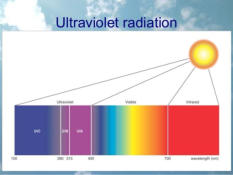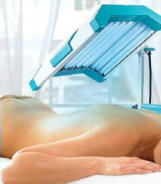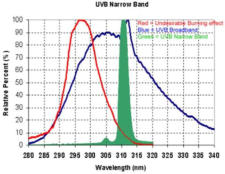




© 2023 - Centro Medicina Natural y Antienvejecimiento - Neural therapy, Homeopathy, Ozone therapy, Carboxytherapy, Mesotherapy
Avda. Juan Carlos I, nº 29, portal 5, 2ºB -- 29680, Estepona (Málaga)
What is Phototherapy?
Phototherapy
or
light
therapy,
involves
exposing
the
skin
to
ultraviolet
light
on
a
regular
basis
and
under
medical
supervision
to
treat
certain medical conditions.
Phototherapy
is
the
use
of
specific
wavelengths
of
light
that
have
been
shown
to
be
very
effective
in
the
treatment
of
serious
skin
diseases like psoriasis, vitiligo, atopic dermatitis or eczema, generalized itching, lichen planus and other photoresponsive diseases.
This light occurs naturally as a component of sunlight and is called ultraviolet light (UVB, UVA)
Our
medical
center
has
two
types
of
UVB
treatment,
broad
band
and
narrow
band.
The
major
difference
between
them
is
that
narrow
band
UVB
light
bulbs
release
a
smaller
range
of
ultraviolet
light.
Narrow-band
UVB
is
similar
to
broad-band
UVB
in
many
ways.
It
has
been
known
for
many
years
that
UVB
light
slows
abnormal
growth
of
normal
skin
cells
which
is
associated
with
psoriasis.
Narrow
band
UVB
(light
energy
which
is
emitted
in
a
narrow
band
portion
of
the
UVB
light
range,
311-312
nm)
is
often
used
to
start
the
repigmenting
process for vitiligo and slows growth of psoriasis lesions.
Broadband
UVB
phototherapy
(290-320
nm)
is
another
form
of
phototherapy
that
is
used
less
frequently
in
treating
eczemas,
but
may
be used in certain circumstances.
Phototherapy appears to work in several ways:
It directly reduces itch
It has an anti-inflammatory effect
It increases vitamin D production
It appears to help increase bacteria-fighting systems in the skin
Is Phototherapy Safe?
The
safety
of
ultraviolet
phototherapy
has
been
proven
for
over
100
years.
Recent
studies
show
that
narrowband
UVB
lamps
(UVB-NB)
have virtually NO incidence of causing skin cancer.
Ultraviolet
phototherapy
in
general,
and
particularly
narrow
band
phototherapy
light
has
been
proven
for
long-term
use
and
for
treatment of children with minimal side effects.
Ultraviolet phototherapy has been shown to be an extremely effective treatment for controlling psoriasis and vitiligo.
With
guidance
from
your
physician,
you
will
find
that
using
UV
light
will
keep
you
in
almost
complete
remission
with
minimum
side
effects.
Is
preferable
to
use
narrow
band
UVB
(UVB-NB)
light,
since
there
is
no
need
for
systemic
drugs
and
treatment
times
are
short.
Recent
studies
show
that
the
use
of
UVB
narrow
band
light
(UVB-NB)
results
in
faster
responses
and
longer
remissions
than
with
UVB
broadband (UVB-BB). Using narrowband UVB, results are similar to a PUVA treatment without the adverse effects of the drug.
UVB-NB
is
generally
considered
to
be
safe
for
children
and
lactating
mothers.
Many
practitioners
have
noted
a
significant
reduction
in
psoriasis
scaling
after
the
first
3
to
6
treatments
and
improvement
may
be
noted
after
6
to
9
treatments.
Repigmenting
vitiligo
is
a
longer process.
Do I need to do anything before or after treatment?
You
do
not
need
to
do
anything
before
or
after
treatment;
however,
if
you
are
going
to
be
doing
outdoor
activities
such
as
playing
golf
or
tennis,
boating,
or
just
going
to
the
beach,
please
apply
sunscreen
to
the
exposed
areas.
We
recommend
a
sunscreen
containing
titanium or zinc oxide, which will help prevent sunburn and reduce your risk of skin cancer.
You
may
experience
“sunburn”
like
feelings,
that
is,
you
may
see
your
skin
become
pink
or
red
in
color,
possibly
tender,
about
12
hours
after
a
treatment
in
the
UVB
light
box.
This
may
not
happen
after
the
first
few
treatments
but
it
may
occur
as
we
continue
to
increase
your dose in order to clear your skin.
If you are just pink and have no discomfort, we would like you to come in for your next scheduled treatment.
Can phototherapy cause skin cancer?
NB-UVB
light
has
not
increased
the
incidence
of
skin
cancer.
However,
because
excessive
natural
sunlight
and
tanning
bed
exposures
are associated with skin cancer, we recommend prudent sun exposure with use of sunscreen and avoidance of tanning salons.
What reasons might prevent you having phototherapy?
If
you
are
unable
to
attend
regularly
for
treatment:
courses
of
phototherapy
are
much
more
effective
if
administered
without
interruption. So, attend every appointment and avoid arranging a holiday during a phototherapy programme.
If your skin condition is made worse by natural sunlight.
If
you
have
xeroderma
pigmentosum,
Photosensitive
dermatoses,
such
as
lupus
erythematosus,
Pemphigus
and
bullous
pemphigus
If you have had skin cancer, especially melanoma
If
you
are
taking
a
medicine
which
suppresses
your
immune
system
(Immunosuppressive
medication),
such
as
ciclosporin
or
methotrexate.
If you are taking medicines that make you more sensitive to sunlight.
Previous history of intense exposure to solar light
If you have reached the maximum number of light treatments in a lifetime.
Albinism
Previous use of arsenic or exposure to ionizing radiation
Past history of cataracts or aphakia
Hepatic or renal alterations
Do I need to avoid anything whilst having phototherapy?
Medicines
that
make
you
more
sensitive
to
ultraviolet
light.
You
should
inform
us
of
any
new
medicines
prescribed
or
purchased,
including herbal preparations.
Additional sun exposure or the use of sunbeds.
Excessive
quantities
of
foods
such
as
celery,
carrots,
figs,
citrus
fruits,
parsnips
and
parsley;
these
can
make
you
more
sensitive
to
ultraviolet light.
Perfumed products.
Creams, ointments and lotions other than moisturisers
Short haircuts, as they may result in burning of previously covered skin.
What are the potential side effects of phototherapy?
The short-term side effects of phototherapy include:
Redness and discomfort (sunburn).
Dry and itchy skin: UVB light does tend to dry the skin but this can be easily alleviated by applying a moisturizing cream.
Folliculitis
–
inflammation
of
the
hair
roots
may
occur.
This
does
not
cause
discomfort
and
usually
require
no
treatment
or
interruption of the UV therapy.
A sunlight-induced rash called polymorphic light eruption may develop whilst receiving ultraviolet light.
Cold
sores
–
if
you
are
prone
to
these
it
is
advisable
to
cover
the
area
usually
affected
with
sun
block
when
having
ultraviolet
treatment.
Blisters in areas of psoriasis.
Worsening of skin disease.
Eye damage:
This problem is completely preventable by wearing UV-opaque goggles during the treatment.
If you would like additional information regarding our services or to request an appointment, you can contact us by phone
(952 80 53 68) or by
email
.






























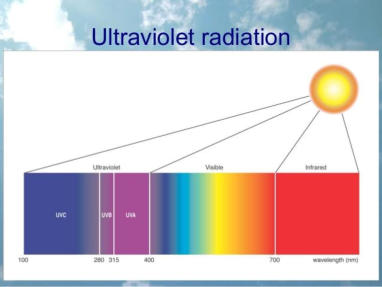
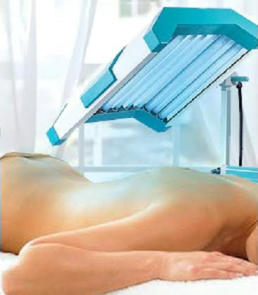
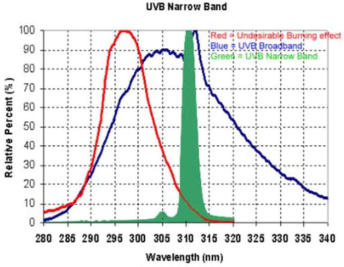

© 2023 - Centro Medicina Natural y Antienvejecimiento
Tel: 952 80 53 68
E-mail: info@medicinabiologica.es


What is Phototherapy?
Phototherapy
or
light
therapy,
involves
exposing
the
skin
to
ultraviolet
light
on
a
regular
basis
and
under
medical
supervision
to
treat certain medical conditions.
Phototherapy
is
the
use
of
specific
wavelengths
of
light
that
have
been
shown
to
be
very
effective
in
the
treatment
of
serious
skin
diseases
like
psoriasis,
vitiligo,
atopic
dermatitis
or
eczema,
generalized
itching,
lichen
planus
and
other
photoresponsive
diseases.
This
light
occurs
naturally
as
a
component
of
sunlight
and
is
called
ultraviolet light (UVB, UVA)
Our
medical
center
has
two
types
of
UVB
treatment,
broad
band
and
narrow
band.
The
major
difference
between
them
is
that
narrow
band
UVB
light
bulbs
release
a
smaller
range
of
ultraviolet
light.
Narrow-band
UVB
is
similar
to
broad-band
UVB
in
many
ways.
It
has
been
known
for
many
years
that
UVB
light
slows
abnormal
growth
of
normal
skin
cells
which
is
associated
with
psoriasis.
Narrow
band
UVB
(light
energy
which
is
emitted
in
a
narrow
band
portion
of
the
UVB
light
range,
311-312
nm)
is
often
used
to
start
the
repigmenting
process for vitiligo and slows growth of psoriasis lesions.
Broadband
UVB
phototherapy
(290-320
nm)
is
another
form
of
phototherapy
that
is
used
less
frequently
in
treating
eczemas,
but
may be used in certain circumstances.
Phototherapy appears to work in several ways:
It directly reduces itch
It has an anti-inflammatory effect
It increases vitamin D production
It appears to help increase bacteria-fighting systems in the skin
Is Phototherapy Safe?
The
safety
of
ultraviolet
phototherapy
has
been
proven
for
over
100
years.
Recent
studies
show
that
narrowband
UVB
lamps
(UVB-NB)
have virtually NO incidence of causing skin cancer.
Ultraviolet
phototherapy
in
general,
and
particularly
narrow
band
phototherapy
light
has
been
proven
for
long-term
use
and
for
treatment of children with minimal side effects.
Ultraviolet
phototherapy
has
been
shown
to
be
an
extremely
effective treatment for controlling psoriasis and vitiligo.
With
guidance
from
your
physician,
you
will
find
that
using
UV
light
will
keep
you
in
almost
complete
remission
with
minimum
side
effects.
Is
preferable
to
use
narrow
band
UVB
(UVB-NB)
light,
since
there
is
no
need
for
systemic
drugs
and
treatment
times
are
short.
Recent
studies
show
that
the
use
of
UVB
narrow
band
light
(UVB-NB)
results
in
faster
responses
and
longer
remissions
than
with
UVB
broadband
(UVB-BB).
Using
narrowband
UVB,
results
are
similar
to
a
PUVA
treatment without the adverse effects of the drug.
UVB-NB
is
generally
considered
to
be
safe
for
children
and
lactating
mothers.
Many
practitioners
have
noted
a
significant
reduction
in
psoriasis
scaling
after
the
first
3
to
6
treatments
and
improvement
may
be
noted
after
6
to
9
treatments.
Repigmenting
vitiligo
is
a
longer process.
Do I need to do anything before or after treatment?
You
do
not
need
to
do
anything
before
or
after
treatment;
however,
if
you
are
going
to
be
doing
outdoor
activities
such
as
playing
golf
or
tennis,
boating,
or
just
going
to
the
beach,
please
apply
sunscreen
to
the
exposed
areas.
We
recommend
a
sunscreen
containing
titanium
or
zinc
oxide,
which
will
help
prevent
sunburn
and
reduce
your
risk
of skin cancer.
You
may
experience
“sunburn”
like
feelings,
that
is,
you
may
see
your
skin
become
pink
or
red
in
color,
possibly
tender,
about
12
hours
after
a
treatment
in
the
UVB
light
box.
This
may
not
happen
after
the
first
few
treatments
but
it
may
occur
as
we
continue
to
increase
your
dose in order to clear your skin.
If
you
are
just
pink
and
have
no
discomfort,
we
would
like
you
to
come in for your next scheduled treatment.
Can phototherapy cause skin cancer?
NB-UVB
light
has
not
increased
the
incidence
of
skin
cancer.
However,
because
excessive
natural
sunlight
and
tanning
bed
exposures
are
associated
with
skin
cancer,
we
recommend
prudent
sun
exposure
with
use
of
sunscreen
and
avoidance
of
tanning
salons.
What reasons might prevent you having phototherapy?
If
you
are
unable
to
attend
regularly
for
treatment:
courses
of
phototherapy
are
much
more
effective
if
administered
without
interruption.
So,
attend
every
appointment
and
avoid
arranging
a
holiday during a phototherapy programme.
If your skin condition is made worse by natural sunlight.
If
you
have
xeroderma
pigmentosum,
Photosensitive
dermatoses,
such
as
lupus
erythematosus,
Pemphigus
and
bullous
pemphigus
If you have had skin cáncer, especially melanoma
If
you
are
taking
a
medicine
which
suppresses
your
immune
system
(Immunosuppressive
medication),
such
as
ciclosporin
or
methotrexate.
If
you
are
taking
medicines
that
make
you
more
sensitive
to
sunlight.
Previous history of intense exposure to solar light
If
you
have
reached
the
maximum
number
of
light
treatments
in a lifetime.
Albinism
Previous use of arsenic or exposure to ionizing radiation
Past history of cataracts or aphakia
Hepatic or renal alterations
Do
I
need
to
avoid
anything
whilst
having
phototherapy?
Medicines
that
make
you
more
sensitive
to
ultraviolet
light.
You
should
inform
us
of
any
new
medicines
prescribed
or
purchased,
including herbal preparations.
Additional sun exposure or the use of sunbeds.
Excessive
quantities
of
foods
such
as
celery,
carrots,
figs,
citrus
fruits,
parsnips
and
parsley;
these
can
make
you
more
sensitive
to
ultraviolet light.
Perfumed products.
Creams, ointments and lotions other than moisturisers
Short
haircuts,
as
they
may
result
in
burning
of
previously
covered skin.
What are the potential side effects of phototherapy?
The short-term side effects of phototherapy include:
Redness and discomfort (sunburn).
Dry
and
itchy
skin:
UVB
light
does
tend
to
dry
the
skin
but
this
can be easily alleviated by applying a moisturizing cream.
Folliculitis
–
inflammation
of
the
hair
roots
may
occur.
This
does
not
cause
discomfort
and
usually
require
no
treatment
or
interruption of the UV therapy.
A
sunlight-induced
rash
called
polymorphic
light
eruption
may
develop whilst receiving ultraviolet light.
Cold
sores
–
if
you
are
prone
to
these
it
is
advisable
to
cover
the
area
usually
affected
with
sun
block
when
having
ultraviolet
treatment.
Blisters in areas of psoriasis.
Worsening of skin disease.
Eye
damage:
This
problem
is
completely
preventable
by
wearing UV-opaque goggles during the treatment.
If
you
would
like
additional
information
regarding
our
services
or to request an appointment, you can contact us by phone
(952 80 53 68) or by
email
.






























